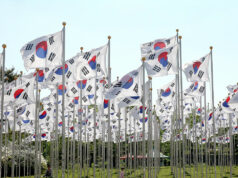Consumer loan rates steady in face of looming central bank tightening
By Maria Eloisa I. Calderon
Editor-At-Large
HOMEBUYERS with jumbo mortgages have less to fear about the end of ultra-low borrowing costs, while consumers contemplating personal loans or car financing have time to lock in affordable fixed-rate deals, bankers said.
Today’s the D-day when the Bangko Sentral ng Pilipinas (BSP) decides on whether to close the era of cheap money but it’s unlikely to pull surprises. It’s widely expected to keep interest rates at where they have been since 2014, according to a BusinessWorld poll published Monday.
The Philippine central bank’s Thursday rate-setting meeting — its last for 2017 — comes just hours after Janet L. Yellen delivers her final press conference as chairwoman of the US Federal Reserve.
The Fed was due to announce its decision late Wednesday, but markets had already factored in one more rate hike, the third increase for the year.
The consensus is that the BSP won’t move in lockstep with the Fed.
While most financial markets look to the US federal funds rate for guidance on rates for mortgages, credit cards and other borrowing, Philippine borrowing costs are not solely dictated by BSP rates.
Chances are mortgage payments will remain the same in the near term no matter what BSP Governor Nestor A. Espenilla, Jr. and his deputies say today, bankers said.
“You have to distinguish between market and policy rates,” Bank of the Philippine Islands (BPI) lead economist Emilio S. Neri, Jr. said in an interview at the bank’s headquarters on Dec. 12.
“This year is a good example of how the two actually diverge, because BSP didn’t do anything this year despite the Fed hiking.”
The national government’s renewed appetite for borrowing to finance its massive infrastructure program, “policies outside the central bank” and “global developments” have influenced domestic market rates, Mr. Neri said. Still, borrowings costs are at levels lower than those seen from five years ago.
BPI – which according to BusinessWorld’s Research unit is the third-largest bank in terms of loan book size – priced its home loans at a range of 5.25% for those falling due in one year and 11.5% for 16-20 years.
Five years ago, the rates were six percent to 11.5%, it said.
In 2013, Philippine Savings Bank, the country’s second-biggest thrift lender, cut home loan rates by as much as two percentage points for those maturing in one year and by a percentage point for 25-year term loans.
It raised lending rates for mid-term housing loans by 2014, but the borrowing costs had been steady since, documents the bank uses for its pitch to customers showed.
It’s the same narrative for car loans and credit cards: their interest rates fell to historic lows, and have stayed where they are in the past five years.
“Our rates are actually quite stable and competitive in the last five years,” BPI Senior Vice President and Retail Lending Group Head Joaquin Ma. B. Abola told BusinessWorld.
“We believe rates will remain competitive in the coming years, with only a slight increase in the next couple of years.”
Improved interest spreads — the difference between the rate banks pay deposits and what they charge borrowers — have partly been driving lenders’ profitability.
Combined with higher loan volume and a good mix of exposure to long-tenored project financing, BPI, for one, grew its bottom line by an annual 13.8% to P5.4 billion in the third quarter after net interest income rose by 13%.
Those loans — the boost to banks’ earnings — are unlikely to be the same drag to their balance sheets when the BSP tightens monetary policy, which banks like ING and Nomura believe the central bank will do come 2018.
Philippine lenders’ exposure to household debt is not as alarming as their counterparts elsewhere in Asia, Standard & Poor’s said last week.
Just this quarter, personal loan rates at BPI have risen to a monthly one percent for one-year loans from below one percent, but that segment accounts for just a “tiny fraction” of the lenders’ loan books.
Personal loans are “unsecured” — without collateral — so banks charge a premium for uncertainty.
“You’re talking of a business that’s very small. Personal loans is not a very big business. The reality of it is that much of the retail market is the housing loans, auto loans, then you got credit cards,” said Mr. Abola.
“Remember these are unsecured loans… Considering that it is just small, we have the ability to adjust pricing because there really is demand. Even if we double our business there, it’s not going to make a dent on the entire unibank,” he added.
“You can’t use personal loans as a barometer for what’s happening in the entire market.”
Should homebuyers lock in a fixed-rate mortgage now to avoid defaults when rates become unaffordable?
“If you’ve signed up for variable rate mortgage — that is the rate changes yearly — you can still sign up for longer-term fixed-rate mortgage. But if you are already locked in say five years and want a 10 or 15-year fixed rate, that comes with a fee,” said a PSBank loan officer who spoke on condition of anonymity.
“When you know that interest rates will rise, then you lock in now,” the source added.
“But since 2012, I have seen rates remain stable.”
Brisk money supply growth — at a double-digit pace — should keep the rise in interest rates at bay, said BPI’s Mr. Neri, who forecasts the BSP will hold fire on rates next year.
And even if a bank were to charge more for financing a new home or car, there will always be another lender that will be ready to offer a better deal.
“The other thing is competition. As soon as you make an adjustment up, competition takes it from you. It’s a highly competitive market,” said Mr. Abola.



